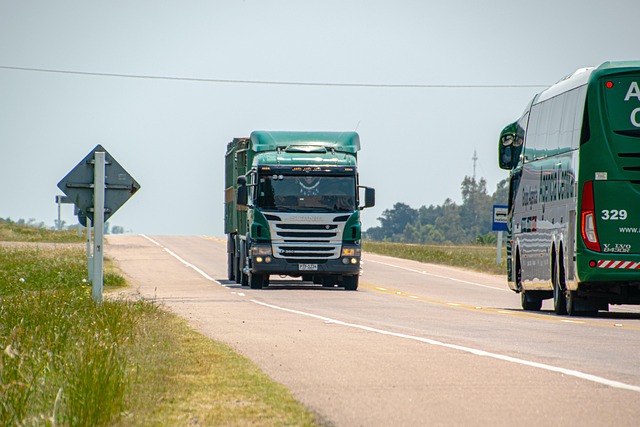Registering a car in California is a straightforward process, but understanding the requirements is key. This guide will walk you through each step, ensuring a smooth experience. From gathering essential documents to verifying your Vehicle Identification Number (VIN) using reliable tools like VIN verifiers, you’ll learn best practices for compliance. Once ready, visit the California Department of Motor Vehicles (DMV) or utilize online services to complete registration, and don’t forget to pay the necessary fees.
- Understand California Car Registration Requirements
- Gather Necessary Documents for Car Registration
- Verify Vehicle Identification Number (VIN) Accuracy
- Visit California Department of Motor Vehicles (DMV) or Use Online Services
- Pay Car Registration Fees and Receive Your Plate
Understand California Car Registration Requirements

Before registering your car in California, it’s crucial to understand the state’s specific requirements. The process involves verifying the Vehicle Identification Number (VIN) as a fundamental step. In California, this typically includes a VIN inspection to ensure the vehicle’s authenticity and history. The State of California requires that all vehicles be inspected for emissions and safety standards before registration. This inspection is often conducted at a designated smog check station.
Additionally, you’ll need to provide proof of insurance and pay associated fees. A mobile VIN verifier can be useful in this process as it facilitates the early stages of verification by checking the vehicle’s history digitally. This service ensures that your car meets all legal standards before you commit to registration, streamlining a potentially complex procedure.
Gather Necessary Documents for Car Registration

Before you start the registration process, it’s crucial to gather all the essential documents required by the California Department of Motor Vehicles (DMV). This includes your vehicle’s registration from the previous state, a valid driver’s license, proof of insurance, and identification documents like a passport or state-issued ID. One critical piece is the Vehicle Identification Number (VIN) verifier—either through a traditional DMV visit or utilizing a mobile VIN verification service to ensure the vehicle’s history checks out.
Additionally, you’ll need a completed application form, which can be obtained from the DMV website. Make sure your vehicle passes the necessary safety and emissions inspections, often referred to as vin inspection, to avoid any delays. Having these documents ready will streamline the car registration process in California.
Verify Vehicle Identification Number (VIN) Accuracy

Before initiating the car registration process in California, it’s crucial to ensure your vehicle’s Identification Number (VIN) is accurate. A VIN serves as a unique code for each vehicle and plays a vital role in the registration procedure. The first step in this process involves obtaining a reliable VIN verifier. Many services offer mobile vin inspection options, allowing you to verify your car’s VIN from the comfort of your home or garage. This is especially beneficial when preparing the necessary documents for registration.
Accurate VIN information is essential as it helps in identifying the vehicle’s make, model, year, and other critical details. Any discrepancies or errors in this number can lead to delays or even rejection of your registration application. Therefore, taking the time to confirm its validity through a mobile vin verification process is a wise step to ensure a smooth car registration experience in California.
Visit California Department of Motor Vehicles (DMV) or Use Online Services

Visiting the California Department of Motor Vehicles (DMV) or utilizing their online services is a crucial step in registering your car. The DMV provides several convenient options for vehicle registration, including in-person visits and digital platforms. For those who prefer a more traditional approach, visiting a local DMV office allows you to complete the registration process face-to-face with an agent. They can assist with any questions regarding the vehicle’s history or required documents.
If you’re looking for added convenience, the state of California offers online services that make registering your car hassle-free. One such service is a vin inspection using a mobile vin verifier, which allows you to verify your vehicle identification number (VIN) and check its status remotely. This digital solution is particularly useful if you have already gathered all necessary documents, ensuring a swift and efficient registration experience.
Pay Car Registration Fees and Receive Your Plate

After completing your car’s purchase, the next step in California is to register your vehicle with the DMV. To do this, you’ll need to pay the required registration fees, which vary based on your vehicle type and model year. You can typically find these fees on the California DMV website or by visiting a local DMV office. Once the fees are paid, you’ll receive your unique vehicle identification number (VIN) verifier, often in the form of license plates.
If you’re opting for a more convenient approach, consider using a mobile VIN verification service, which allows for a quick and efficient process. These services send an inspector to your location to verify your car’s details, including its VIN, making it a hassle-free alternative to visiting a DMV office. With this method, you can obtain your registration plates faster, ensuring a smoother transition into California’s vehicle registration system.
Registering a car in California is a straightforward process once you understand the requirements and gather the necessary documents. By verifying your Vehicle Identification Number (VIN) using a reliable VIN verifier, ensuring accuracy, and completing the application at the California DMV or through online services, you’ll have your vehicle registered promptly. Remember to pay all fees and receive your license plate to legally operate your car in the Golden State.
